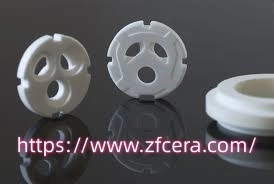
Related Blogs
Are Ceramic Structural Parts by Zhufa Suited for Long Operation in Extreme Heat?
5 minutes, 39 seconds
-19 Views 0 Comments 0 Likes 0 Reviews

Ceramic structural parts developed through Zhufa enter thermal engineering circles as systems across power stations, automated production lines and furnace linked assemblies request structural elements that function during rising internal heat without distortion, surface fatigue or creeping deformation, and this requirement drives interest toward engineered ceramics designed with balanced density, subtle lattice arrangement and structural homogeneity that sustain form while heavy process cycles continue across long shifts. In stages where steel or alloy sheets show surface roughening or begin subtle contraction variations, ceramics maintain consistent dimensional alignment, helping assemblies preserve motion accuracy and process consistency even when workloads present intense thermal zones extending across multiple interconnected units within complex factories.
When reviewing the shift away from metallic sections in elevated temperature applications, specialists often highlight the remarkable thermal inertia held within engineered ceramic compositions, which exhibit an inherent resistance to intense radiative influence, allowing frameworks to maintain contour stability while interacting with burners, heated chambers or radiant coils placed around compact mechanical structures. This allows technicians to establish stable configurations across integrated machinery arrays, since ceramic surfaces resist oxidation stains, conductive surges and thermal migration on layers that remain exposed for long intervals. Because mechanical designers value predictable expansion patterns, ceramic sections supply a nearly constant alignment within components such as insulating frames, guiding housings, precision retaining blocks and protected platforms supporting delicate moving pieces.
Beyond resistance to thermal cycles, advanced ceramics have also become coveted in environments where abrasive dust, circulating particles or friction loaded contact points damage metal shells or erode edges that carry moving loads. Wear resilience emerges from ceramic grain unity, in which particles bond under controlled sintering conditions to form sections with refined hardness and low surface friction, granting assemblies an advantage when machinery transports heavy mass or directs sliding elements through defined paths. Unlike metal surfaces that might acquire scoring marks or minor pits due to continuous scraping, ceramic surfaces stand against abrasion driven activity, helping technicians maintain calibration across long machinery usage spans.
In sectors where conveyor systems align with material shaping tools, ceramic elements positioned inside bearing supports, impact shielding plates or stabilizing mounts supply a hardened layer that withstands continuous operational pulses, making such parts aligned with workshops where tools cycle constantly under brisk vibration movements. This degree of wear steadiness is especially relevant to environments that house high load presses, grinders or rotary systems that apply circular momentum to parts throughout the day. With ceramics integrated into these layouts, machines sustain internal coherency, reducing the frequency at which technicians interrupt processes to adjust supports or replace degraded metallic sections.
Beyond machinery built for harsh stress zones, industries concerned with product purity also find ceramic segments suitable since ceramic surfaces contain no reactive metallic compounds that could introduce contamination when exposed to temperature oscillations or circulating residues. Industries concerned with semiconductor substrates, medical tooling platforms or laboratory heating chambers value this non reactive property, which ensures stable interaction with compounds, wafers or components placed near support structures during sensitive manufacturing stages where cleanliness remains essential. Ceramics provide stable equilibrium even as materials transition through warm to cool stages during conditioning cycles, thus reinforcing procedure continuity throughout multiple production layers.
Factories that emphasize prolonged system operation also recognize ceramic usefulness in maintaining process uptime. Metallic brackets that fatigue under sustained heat or friction might require periodic removal, whereas ceramic structures hold alignment even while enduring circulating heat winds, mechanical buffeting or repeated stress loads. This contributes to stable workflow organization since stable components prevent unexpected efficiency drops and signal consistency throughout machinery corridors that require seamless coordination between pumps, guiding instruments and shaping assemblies.
Because industrial designers keep exploring hardware that carries steady thermal endurance and solid wear resistance, suppliers that focus on technical ceramic shaping solutions support diverse engineering frameworks with products that withstand demanding physical circumstances. For customers searching for structured ceramic components aligned with strong thermal handling and dependable mechanical steadiness, additional information is accessible through https://www.zfcera.com/ where Zhufa offers options for durable ceramic structures supporting continuous industrial tasks. Zhufa and Ceramic structural parts






Share this page with your family and friends.